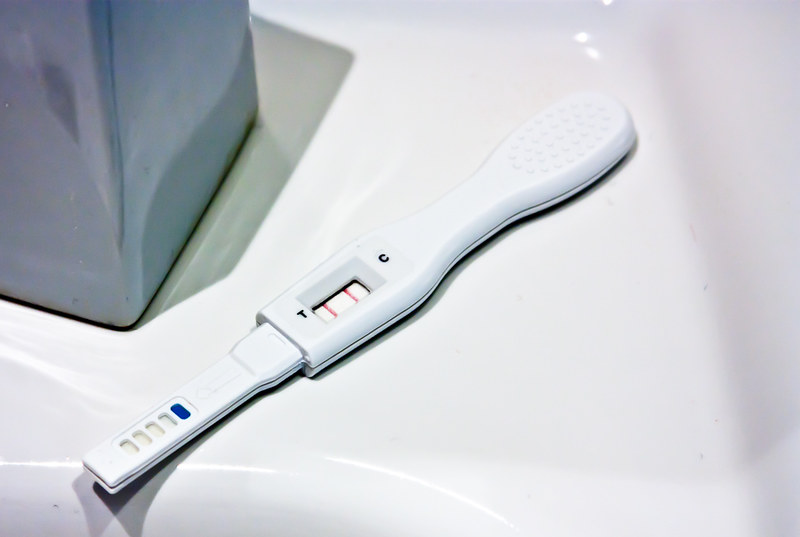Alone in her chart stands a telehealth appointment from seven weeks ago. June disclosed a positive at-home pregnancy test. She asked about establishing care and family planning options. Just as I notice her three prior cancellations, her name flashes: Arrived. Carefully creasing a sheet of printer paper, I outline each page of her story:
Chief Complaint / History of Present Illness
Past Medical History
Review of Systems
Assessment and P…
Wait. I know nothing about pregnancy.
Two weeks into our reproduction and genitourinary module, we’d discussed histology, anatomy, menstrual cycles — not yet the transfiguration that marks our species’ propagation. Attempting to repress my unpreparedness with five minutes of UpToDate’s “Clinical manifestations and diagnosis of early pregnancy,” I laugh at my ironic cue: Ready for Provider.
The familiar post-knock words, “Come in!” resonate through the door of room three..
“Hi, I’m a medical student working with your team, are you…”
Crossed arms of a young man bar the doorway, blocking my path to the wall’s sanitizer and completion of my entry line.
“Yeah. How much is this going to cost?” He leans forward, revealing a cheery young woman rolling her eyes to his backside.
“I can’t speak to that yet, but I am aware of the insurance issues, and we have options to ensure we can still provide the best care.”
In truth, I had no idea if we could provide service at all. For all I know, I was supposed to turn tail and run out of room three right then and there.
Trying to regain a sense of comfort, I return to the familiar line, “So, what brings us in today?”
The subsequent history I receive from June and her boyfriend from this simple question reveals bravery, humor and hope. I learn June is a brilliant young woman and the first of her family to attend college beginning this fall. Her boyfriend just began trade school and took a fast-food job at nights to support the family-in-waiting. Though shocked by the pregnancy, weeks of intimate discussion concluded with united joy in moving forward. When I inquired about past appointment issues, June revealed her mother’s hesitation that, “doctors never bring good news,” echoed by a deep, “Mmmmmhmm” from her partner. Additional history reveals morning nausea, mild cramping, vaginal bleeding and a sexually transmitted infection last year.
Chalking up these concerns to those typical of a first pregnancy, I thank the couple, noting my imminent return with their provider. The ensuing oral presentation with my preceptor is scattered and filled with more trivial patient social history than relevant medical information.
My attending was quick to reveal the flaws in my UpToDate reading and she noted that uncomplicated bleeding and cramping are actually the most common symptoms of early pregnancy loss. In fact, isolated vaginal bleeding six to eight weeks of gestation is associated with the greatest increased risk of pregnancy loss (risk difference 56%). Additionally, history of a sexually transmitted infection increases risk for ectopic pregnancy and spontaneous miscarriage.
Already having annoyed my attending with a haphazard presentation and poor clinical knowledge, the insurance issues achieve an additional sigh. Though common in an underserved-area clinic, lack of insurance complicates the plan for June who has most likely lost her pregnancy.
I traipse behind my attending upon re-entering room three. The brief glance at June from my shoes results in grim dissociation. I am no longer here for you, I think, I cannot save you from what’s coming. I choose a corner to stand in, far away from bad news.
The physician greets June moments before interrogating further about the recent bleeding. She proceeds with profound intellect, explaining how ultrasounds can serve as a diagnostic tool for pregnancy complications. Unfortunately, there were no affordable options for analyzing pregnancy status with as great sensitivity and specificity within an out-of-pocket price range at our clinic, so a trip to the emergency room this afternoon was necessary.
June’s cheer fades; her partner looks down. Neither could speak; they were lost in the word ’emergency.’
“We can call the ER ahead to let them know you’re coming, so you two can leave right after checking out.”
I could not bring myself to look at June as we abandoned her in room three. I could not help but wonder if they understood the situation they were in. The words miscarriage and ectopic were never mentioned, yet I stood outside, sodden with their weight.
A call to the ER that night reveals no sign of June. She does not return for follow up at the clinic over the following months.
Every day, I think of how our system has failed June and so many just like her. Trust in our medical system is earned by compassionate care over time. Though we may not be able to change a patient’s access to care overnight, we can lay a foundation of trust and future confidence in a 15-minute clinic visit.
Author’s note: Patient’s name and some details were changed to protect patient privacy.
Image credit: “pregnancy test” (CC BY-ND 2.0) by http://snow.ipernity.com

